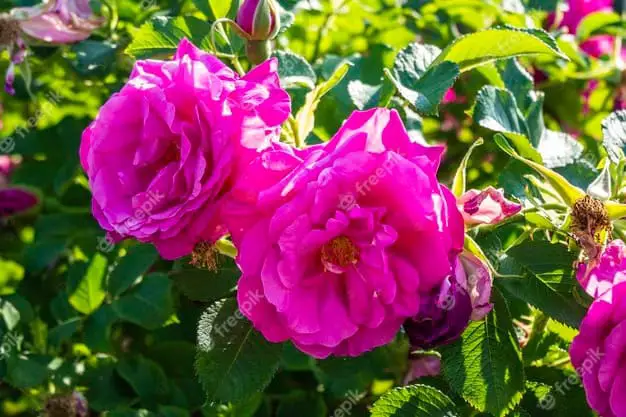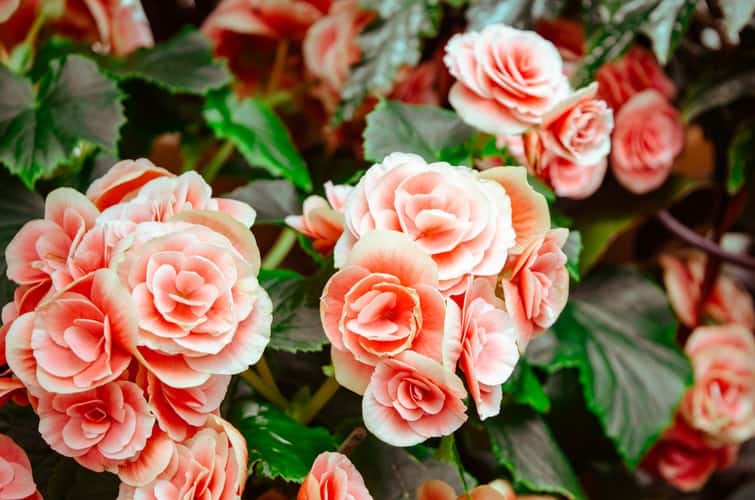Contents

If you’ve got roses in your indoor or outdoor garden, you’ll realize how beautiful they are. They’re attractive and a delight to see, especially when they bloom. But how do you keep them pretty and healthy after the first bloom? To ensure your knockout rose flowers properly for a long time, you will need to prune them. The fruit produced by the knockout rose, popularly known as rose tips, can inhibit flowering in the future. This can defeat the purpose of having knockout roses; you want to avoid it at all costs. In this article, I’ll be guiding you through how you could prune your roses to prevent this eventuality.
Why Should you Prune Knockout Roses after First Bloom?
Knockout roses can be pruned at any time, but it is best to do so after the first bloom. This will allow it to continue to produce flowers and bloom in the future without growing out of control. You should, however, not prune your knockout rose in the late summer. Pruning in the late summer will mean that your knockout rose will grow late and will not harden come winter.
To prune your knockout roses, you will need to follow the appropriate steps, these include:
Gear up
You will need the proper equipment to make your task easier. Yes, a simple task as gardening does require personal protective equipment (PPE), especially when you’re dealing with prickly thorns that can pierce your skin. To protect yourself, you should wear the appropriate hand gloves. Once you are protected from injuries, then you need a pair of bypass shears.
Ensure that you do not use an anvil as it can damage the canes of the roses. Bypass shears, on the other hand, make neat and precise cuts. You will also need to be wearing long-sleeved clothing to prevent any thorn pricks. Work overalls are the perfect outfit for pruning roses, but any long-sleeved shirt can also suffice. The proper equipment will prevent injuries and hazards, allowing you to operate and prune your knockout roses efficiently.
Guidelines for Pruning Knockout Roses

The guidelines for pruning knockout roses may also apply to other species of roses.
Use sharp pruners
It goes without saying, but you will need to use sharp pruners. Sharp pruners allow you to cut the canes of the roses easily. While most people think that sharper pruners carry a greater risk of injury, this is not the case in actuality. Sharper pruners allow for one-time cuts, and multiple cut attempts are known to increase the possibility of hazards.
Good to Read: Types of Garden Tools and Their Uses
Remove deadwood
Any wood, cane, or branch that is dead should be removed. As long as these dead parts still exist, new and fruitful branches and canes cannot grow. Removing them will allow new and productive growth come the next growing season. The branch doesn’t have to be dead completely before you remove it. Once you notice that there isn’t any healthy growth present, you will need to remove it. While it may still technically be alive, it likely won’t produce any more than it currently does. Cutting it off will make way for a new branch that will probably produce more than the current one. You can also prune off any branches growing in directions where you don’t want them.
Remove last year’s growth.
In this instance, you aren’t only removing branches that are dying or dead. Here, it would help if you made the cuts slightly atop the outward-facing buds. In some instances, though, you can’t make the cuts atop the outward cutting buds. These instances include bud spreading covering a large area where you will need longer branches that won’t overlap. Here it would help if you only cut between one-third and a half of the branches from the previous year’s growth. Again, the ideal bush will have a V shape with space in the middle.
Remove suckers
There aren’t always suckers present on knockout roses, but you will need to remove them where they are present. You will need to obliterate the suckers for them to have any effect. To achieve this, you will need to dig to the bottom of the rootstock and pull them down to remove them. This will ensure that you also remove the buds which would otherwise have produced new suckers. After removing the buds, allow air to dry out the wound before you bury the roots once again.
When removing suckers and buds, you will need to be careful not to remove a newly growing cane. You should differentiate the sucker from the cane bud by the shape, size, color, and foliage size. At times, you may be unable to differentiate between buds from a rose or a sucker. In such a case, you should allow the bud to continue growing until you tell the difference. For example, a cane climbing the bush rose without producing flowers will usually be a sucker.
Cut off flowers
This may seem like an odd thing to do, but it is necessary when pruning your knockout roses. Pruning the plant will help you get it in the shape or arrangement you desire. As knockout roses are mainly ornamental, this is a necessary procedure. When you’re cutting off flowers for a vase or display, you should mind how many stems you cut along with it. It would help if you had enough stem to support the flower, and anything more is unnecessary. When pruning, make sure you prune to a bud that is growing outward or a five-leaflet leaf.
Cuts on branches should be done 45⁰ which helps to foster growth. The summer and winter require different timing when it comes to pruning. Summer requires you to prune early and mid-summer, while winter requires you to prune late. Once done, you can expect the roses to bloom in good health come blooming season. It would help if you ended all pruning at least two months before the first frost is expected in your area.
When it comes to broken or damaged branches, you don’t need to wait for any particular season to remove them. Once you notice them, you can remove them and help improve the overall health of the knockout roses. Carrying out this pruning regularly as dedicated will not only give you a healthy plant but one that will last for a long time.
Want to know more about gardening ?
Fill in your email address in the form below and you'll receive all the latest updates directly in your in-box.
Thank you for subscribing.
Something went wrong.